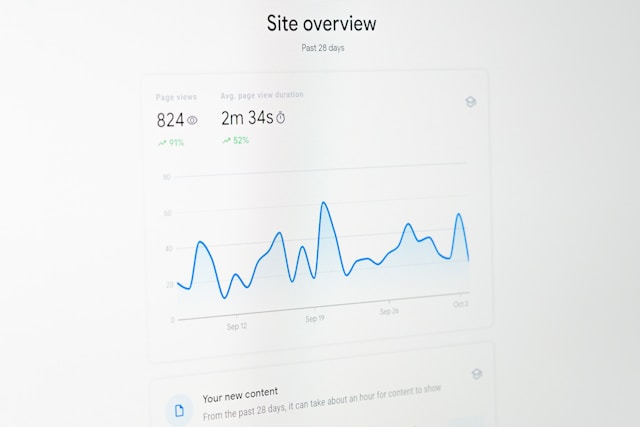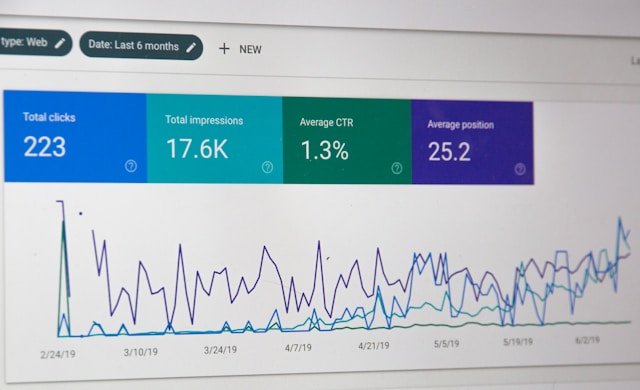A website can attract hundreds or even thousands of visitors a month and still deliver only a handful of enquiries. Many business owners see traffic increase and assume results will follow. But attention alone does not create revenue. A visitor has value only when they make contact, request a quote or book a service. That moment is called conversion. It is where curiosity becomes commercial opportunity. When websites struggle to convert, revenue potential disappears quietly in the background without any alert or warning.
Conversions reveal how well a website helps someone decide. A visitor arrives with a problem they want solved. They need confidence that the business understands their situation, delivers results they can trust and makes it easy to take the next step. If the visitor feels uncertain or confused, they leave. The business loses not just a click, but a potential customer who may never return. This is why conversion performance is more important than traffic volume. It determines whether marketing creates results or waste.
Visitors Need Clarity Faster Than Most Websites Provide It
When someone lands on a page, they quickly ask themselves three questions. First, am I in the right place. Second, does this business solve the issue I have. Third, can I trust them to deliver. These questions must be answered within seconds or attention fades. If a business specialises in kitchen renovations but the headline mentions general home improvements without focus, the visitor may not feel understood. If a dental clinic buries essential treatments behind complex menus instead of showing them clearly on the homepage, anxiety increases rather than confidence.
Clarity is the strongest early conversion driver. A visitor is reassured when messaging states clearly who the business helps, what outcome they provide and how to get started. Simple language performs better than marketing slogans. Direct statements reduce hesitation. When a website is vague, the visitor has to work harder to understand what is on offer. People rarely make that effort. They move on.
A clear website builds confidence immediately. A confusing one eliminates interest before it has a chance to grow.
Trust Must Be Demonstrated, Not Claimed
Confidence does not come from the business describing itself as high quality or experienced. Every business claims that. Visitors need evidence. Proof shows the business has produced successful outcomes for real people. Proof reduces fear and gives the visitor a reason to believe.
There are many forms of evidence that influence trust. Reviews show satisfaction and reliability. Before and after comparisons show capability, especially for trades and personal services. Project highlights show variety and complexity. Membership in professional associations or possession of relevant qualifications show compliance and safety. Images of actual work rather than stock photos help visitors picture what the result will feel like. Location specific examples show relevance to their community or suburb.
The more a business demonstrates, the less the visitor has to assume. When visitors assume, they often assume incorrectly. When proof is visible, the decision feels safer. Websites that lack trust elements convert poorly not because interest does not exist, but because doubt is stronger than desire.
The Path To Action Must Be Obvious And Simple
Even when the visitor wants help, friction blocks conversion. Friction includes anything that makes taking action feel difficult, confusing or time consuming. A call button hidden in the footer, a form requesting too much personal information or multiple service pages without a clear path to booking all create unnecessary resistance. A visitor might think the service looks ideal but abandon the journey if the next step feels unclear.
The most effective conversion layouts prioritise the action at every meaningful moment. If someone is ready to contact in the first fifteen seconds, they should not have to scroll or search to do it. If someone wants to compare offerings before making contact, the website should guide them to that information without introducing doubt. If someone prefers calling to filling out a form, click to call access should be immediate on mobile.
Websites succeed when the step from interest to enquiry feels natural and low risk. They fail when action feels like effort.
Design Quality Influences Perceived Capability
Visitors form a strong impression from the design alone before reading a word. If the layout is cluttered, colours clash or images feel outdated, the visitor interprets this as a reflection of the business. A mechanic with a slow, poorly presented website may appear careless even if the workshop delivers exceptional service. A cosmetic specialist with amateur visuals may appear less skilled than competitors even if qualifications are identical. Perception drives decisions.
Good design supports clarity. It helps the visitor find the right information faster. It makes the brand feel more credible. When paired with strong messaging and proof, design enhances conversion significantly. When design is neglected, everything else becomes harder to believe.
A business may be outstanding at what it does, but the visitor judges only what they see. A website is the business’s first impression to many. That impression must create confidence, not uncertainty.
Hesitation Grows When Questions Go Unanswered
Visitors expect information that addresses their decision criteria. They want to know what makes the business different, how the pricing works, what the process looks like and what others experienced. When these questions are not answered effectively, hesitation increases. Even if the visitor believes the business might be right for them, uncertainty holds them back.
Addressing common concerns proactively removes fear. For example, a physiotherapy clinic discussing recovery timelines and payment options helps patients feel ready to book. A solar installer explaining rebate processes or installation timeframes turns confusion into confidence. When the business shows that they understand concerns clearly, trust increases naturally.
The website should make the customer feel that the business already understands their situation before they reach out.
Conversion Strength Determines Business Stability
A strong conversion rate absorbs seasonal variation, economic pressure and fluctuating demand. Even when fewer people search or click ads, more of those who show interest turn into real opportunities. That stability is incredibly valuable. It allows the business to plan confidently rather than guess. It allows marketing to scale because every investment in traffic produces reliable outcomes.
A weak conversion rate creates unpredictability. One month may be strong and the next weak without explanation. The business spends more time worrying about where work will come from next instead of focusing on serving customers well.
Consistency comes from conversion. Reliability comes from conversion. That reliability is a competitive advantage.
Improving Conversion Is More Impactful Than Increasing Traffic
If a business doubles traffic but conversion remains low, results stay inconsistent. If a business improves conversion significantly, results improve even if traffic stays the same. Conversion is the multiplier that determines whether growth efforts succeed or struggle.
Conversion performance is not a single change but a continuous improvement process. Enhancing clarity, adding new proof, simplifying structure and refining calls to action all push conversion upward gradually. Each improvement compounds. Over time the website becomes a proven asset that the business can rely on.
A website that begins with modest performance can become a powerhouse for revenue if improvement never stops.
Where Most Websites Lose The Opportunity
The reasons websites struggle to convert are rarely technical. They are strategic. They fail to support the customer’s decision making. They speak about the business rather than the customer. They require the visitor to work instead of helping them feel certain. They display claims instead of demonstrating capability. They hide the action instead of guiding momentum.
Improving conversion requires understanding customer behaviour and building every element of the website to support a confident yes. It is not about clever tricks or aggressive popups. It is about helping people find what they need to move forward.
When that happens, marketing becomes more profitable, enquiries grow and the business gains momentum in a measurable way.
If your website is attracting interest but not converting visitors into enquiries, strengthening conversion performance will be the most effective way to unlock growth.



